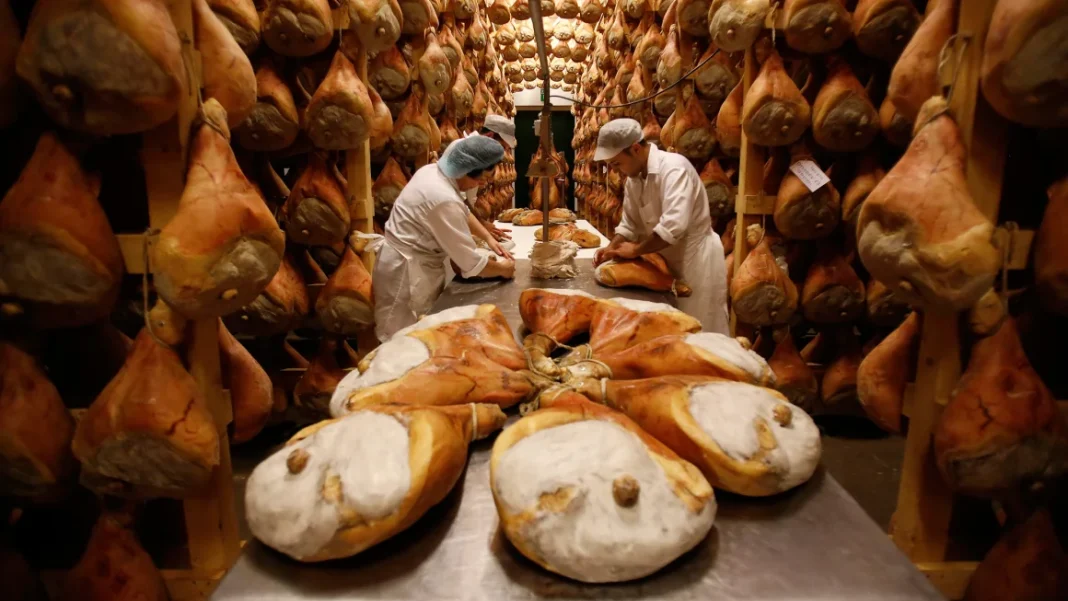There’s nothing quite like the mouthwatering taste of real Prosciutto di Parma, known the world over as Parma ham.
The Italian delicacy, which generates an annual turnover of $1.6 billion, is prized by Italians and enjoys a protected status — only meat cured in the northern region of Emilia Romagna using just Italian-grown pork legs, salt and air can be certified as authentic by the Parma Ham Consortium.
Tourists regularly flock to the region, known for other epicurean delights like balsamic vinegar and Parmesan cheese, to savor the tastiest cuts in their place of origin, bringing in more income as they join guided tours of ham producers.
But all is not well in ham country. A warming climate and the spread of viruses affecting the pigs are causing big problems for Italian pork. The end result is that Parma ham as we know it is increasingly hard to find on international dinner plates.
Unlike many heavily mechanized meat processing industries, Parma ham production is steeped in history and tradition.
In factories like the Slega prosciuttificio, in the hamlet of Langhirano near the city of Parma, Stefano Borchini remembers his father teaching him methods of curing Parma ham that date back to Roman times, when local salt was used to preserve the meat.
The Italian-grown pig’s hind leg is carefully butchered and then salted by a maestro salatore, or salt master, and then left for about a week in a cooling room to begin a process that must take at least 400 days and can be cured for up to three years to create the finest aged Parma ham.
Parma ham is salted twice, grease-sealed with a lard and salt mixture, and then left to cure in climate-controlled rooms. When possible, curing room windows are left open to let in the clean local air.
“My father founded this company, and my first job in the factory was to swat the flies when I was six years old,” Borchini says. “You have a passion for this product, like a wine producer, it’s the same. When you produce food, it’s special. You put your heart in what you do.”
Each of the 40,000 to 50,000 legs of ham the company produces each year is cured the same exact way, and tested for quality with a needle made from horse bone. The needle is stuck into the curing ham in several places and pulled out to check the smell to ensure food safety.
Borchini explains the final phases of the curing process are fine tuned by opening and closing windows to let in the fresh air on cool nights, just the way his father taught him to do. “Meat, salt, time and air is what it takes,” he says.
The process — and the product — draws hundreds of thousands of foodies and curious visitors from all over the world to the area each year to take food tours. Up and down the streets of Parma and little hamlets like Langhirano, small tour groups taste the delicacies, often in conjunction with the area’s other delicacies including Parmiggiano Reggiano (or Parmesan cheese), balsamic vinegar from Modena and local wine.
But lately, threats like manmade climate change and diseases like African swine fever have challenged the ham industry.
Borchini says that a few years ago his business had to install air conditioning systems in the curing rooms because the air doesn’t cool down like it used to.
“We no longer have the fresh cool nights during the summer that we had before, but we are lucky that we can continue,” he says. “It has changed by one or two degrees warmer at night than 15 years ago, which means we have had to adjust.”





